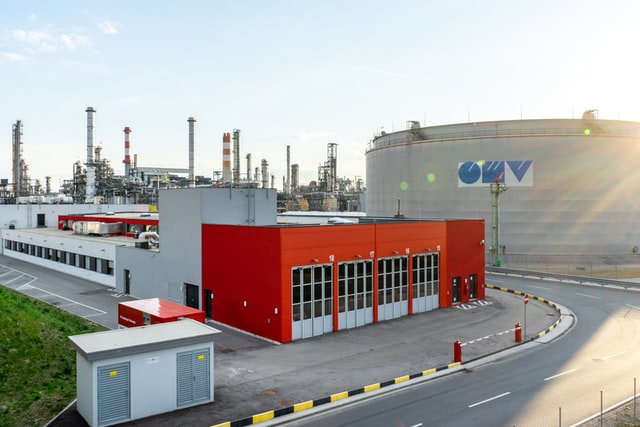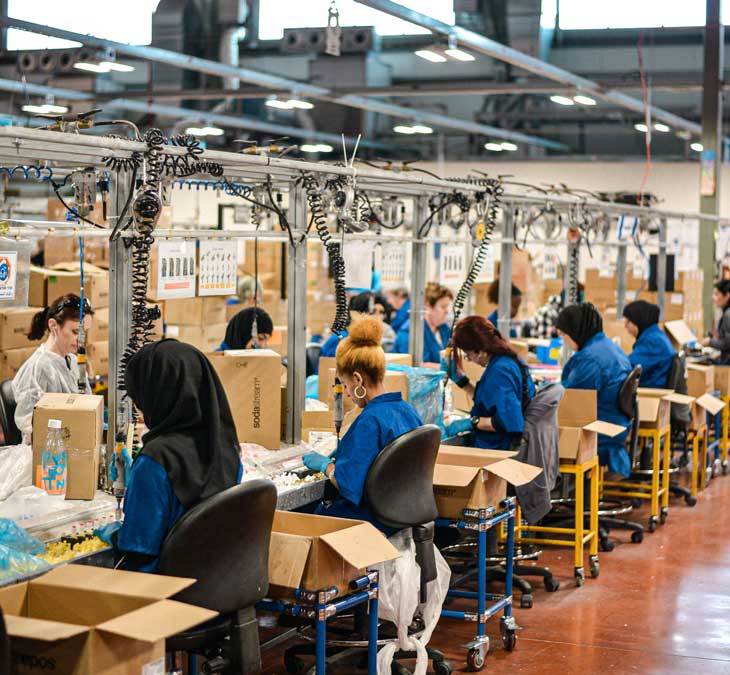Advertisements
First of all, let see what are the requirements for being a world factory?
- Long-term stable and harmonious social environment:
A country’s long-term stability and harmony is the most basic condition for being a world factory. As long as this condition is not met, it will never become a world factory. Because the most important thing for a businessman to open a factory is to ensure the safety of his own property. If the society is unstable, his factory is likely to be robbed by robbers, and he will live in trepidation every day and dare not continue working at all. Not only do businessmen in their own country dare not open factories, but foreign capitals dare not open factories in unstable countries, because no matter how hard they work, no matter how easy it is to make money, it is very likely that they will return to nothing.
- A good natural environment is required:
What is a good natural environment? First, there are very few earthquakes and volcanic eruptions. Like many places in Japan, there are many earthquakes, so foreign investors are afraid to open factories. Second, the rainfall should not be too much or too little. For example, Bangladesh has too much rainfall and frequent flooding during the rainy season, so it is not suitable to open factories; for example, many countries in Africa are perennially dry, and most of the factories use a lot of water, so it is not suitable to open factories. Third, it cannot be high temperature all year round, and it cannot be cold all year round, because most factories need to produce at a suitable temperature. Of course, central air-conditioning can be used, but the power consumption is too large, which will increase the production cost.
- Policies that need to be developed:
The factories are mainly divided into state-owned enterprises, private enterprises, joint ventures, and foreign-funded enterprises. In the 1980s and 1990s, China vigorously attracted foreign investment to set up joint ventures. At present, the total number of joint ventures and foreign-funded enterprises accounted for about 20% of the number of Chinese enterprises. If there is no open policy, foreign businessmen cannot come to China to build factories, and the probability that factories in their own countries will become the world’s factories is extremely low. Because every country has its own advantages, no country has an advantage in all walks of life, and only the advantages and disadvantages complement each other to improve the industrial system.
- Reasonable taxation is required:
Most countries have taxes on enterprises, but it is just a matter of high and low. The state’s tax revenue will be used for urban infrastructure construction, road and railway construction, and the distribution of welfare for the people of the country. So if taxes are too low, the gap between the rich and the poor will widen, and capitalists will earn more. If the tax is too high, it will increase the production cost of the enterprise, reduce the profit of the factory, and reduce the willingness of the enterprise to stay in the country.
- There are many people in need:
At present, the global population has reached more than 7.5 billion. What a huge market is the food, clothing, housing, and transportation for 7.5 billion people. To become the world’s factory, the number of large and small factories needs to be more than 1 million. China’s Guangdong, Zhejiang, Jiangsu, and Fujian are all industrially developed provinces with a large number of factories. There are also many factories in Hubei, Anhui, Hunan, Henan, Sichuan, and other provinces. Like some small countries, the land area is not as large as one or two provinces in our country, so how can it be equipped with so many factories?
- A relatively low labor cost is required:
This condition is also very important because the wages of workers determine the cost of production in most factories. Generally, the higher the wages of workers in a region, the higher the local housing price, the higher the rent of the factory, or the higher the cost of land. In another area, the higher the wages of workers, the higher the local prices. This will definitely lead to relatively high costs for the production of goods, and the cost of production of goods is an important weapon for enterprises to compete for the market. Therefore, it is impossible for developed countries to become the world’s factories because their workers have high wages.
- A relatively complete supply chain is required:
To become the world’s factory requires a complete supply chain, ranging from airplanes and automobiles to small buttons and screws, all need to purchase raw materials. Take a car as an example. There are too many parts and accessories, such as steel, aluminum alloy, other metals, engines or batteries, machinery, hardware, electronic equipment, interior decoration, paint, and so on. If these things cannot be produced in the country and need to be imported, the cost of raw materials and accessories will be greatly increased, resulting in a relatively high cost of cars produced. For example, our country has a very complete supply chain, and most of the spare parts of enterprises can be purchased domestically.
- Good infrastructure facilities are needed:
Factories generally require water, electricity, coal, or natural gas, and these need to be guaranteed by the city where the factory is located. It is impossible for people who run factories to generate electricity and tap water on their own because the investment is too large. Especially for electricity, many countries cannot guarantee that there will be no power cuts. For example, some cities in India often have power cuts, so that the normal operation of factories cannot be guaranteed, even if their labor costs are low, people dare not open factories. There is also the division of industrial zones. This country has done a good job of dividing industrial zones into specific areas and bringing factories together so that it is much more convenient for factories to recruit people and produce.
- A better transportation network is needed:
Some of the goods produced by the factory are sold domestically and some are exported. Therefore, there needs to be a complete road network, a railway network, a waterway port, and an airport for air transportation. There are various modes of transportation. China’s railway mileage is the world’s first; highway mileage is the third in the world; highway mileage is the second in the world; there are also a large number of ports and airports. China’s transportation convenience has reached the level of developed countries.
- The country’s own national consumer market that has become the world’s factory must also be large enough:
There is a “Matthew effect”, one of which is that the strong are getting stronger and stronger, which can also be understood as the more and more. If a country has a large consumer market, there will be many factories in one’s own country, which will cause businessmen from other countries around the world to invest and set up factories, which will lead to more and more factories in this country. If a country’s own domestic consumer market is very small and depends entirely on processing exports, it will be difficult to attract foreign investment to set up factories even if workers’ wages are low.

Now let analyze why these countries cannot become the world’s factories?
- The United States.
The United States has a large population, reasonable taxation, good infrastructure construction, and a complete transportation network. However, the cost of factory labor is high, the consumption level is high, and the current supply chain is not perfect. Therefore, if it takes 10 points to become the world’s factory, the United States can only get 8 points, and it is also the country that is most likely to compete with China for the status of the world’s factory in the future. In recent years, the United States has also been emphasizing the return of industries, increasing manufacturing companies, and attracting more companies from around the world to build factories there. In fact, it is not a bad thing to become the world’s factory, as long as companies that pollute the environment are restricted from building factories.
- Germany.
Germany is also a developed country with advanced technology and industry, but most of it is high-end manufacturing. Moreover, Germany has a small land and a small population, and high wages for workers. Therefore, low-profit factories are not suitable for setting up factories in Germany. The German auto industry ranks among the top three in the world, but German auto companies have set up most of their factories in other countries around the world. For example, in China, there are several auto companies that produce German brand cars, and they have established joint ventures with German auto companies to set up factories. In fact, this is also required by our country, which can increase many jobs and reduce the production cost of automobiles. So if it takes 10 points to become the world’s factory, Germany can only get 6 points.
- Japan.
Japan is the same as Germany, Britain, and France. The important thing is that it has a small land and a small population and high labor costs for factories. Another reason is that there are more earthquakes and typhoons in many areas of Japan, so foreign investors dare not set up factories, even their local companies dare not set up factories. Moreover, Japan’s economic growth has been slow in the past decade, its population is aging, and its young people have low desires. It is now in a slow decline. So if it takes 10 points to become the world’s factory, Japan can only get 5 points.
- India.
India has a large land and many people, and the labor cost of factories is low, which is lower than that of our country. It stands to reason that it can become the world’s factory, but India declines before it gets old. Although it is still in the stage of poverty and backwardness, India has a large gap between the rich and the poor. The gap between the rich and the poor is a stumbling block to economic development. In addition, India’s infrastructure is not complete, and many cities often have power outages. The transportation network is imperfect. Many roads are muddy roads, which are difficult to pass on rainy days with potholes. Even if they can pass, cars will travel slowly, which will delay a lot of time. Of course, India’s development in recent years has been okay, and it is true that many large global companies have successively set up factories in India, mainly focusing on India’s cheap labor and the vast consumer market. So if it takes 10 points to become the world’s factory, India can only get 7 points.
Finally, my views and predictions.
It is not a bad thing to become the world’s factory, as long as enterprises that pollute the environment are restricted from setting up factories. Because the manufacturing industry is the cornerstone, and high-rise buildings rise from the ground. Only if the manufacturing industry is strong, the service industry and the financial industry will develop better. Like cities with developed manufacturing industries, population inflows will increase, which will lead to the development of the service industry, and the development of the entire city is relatively good. In my opinion, Indian can become the world factory as India has the highest number of youth population but before that this problems need to be fixed.
Advertisements
